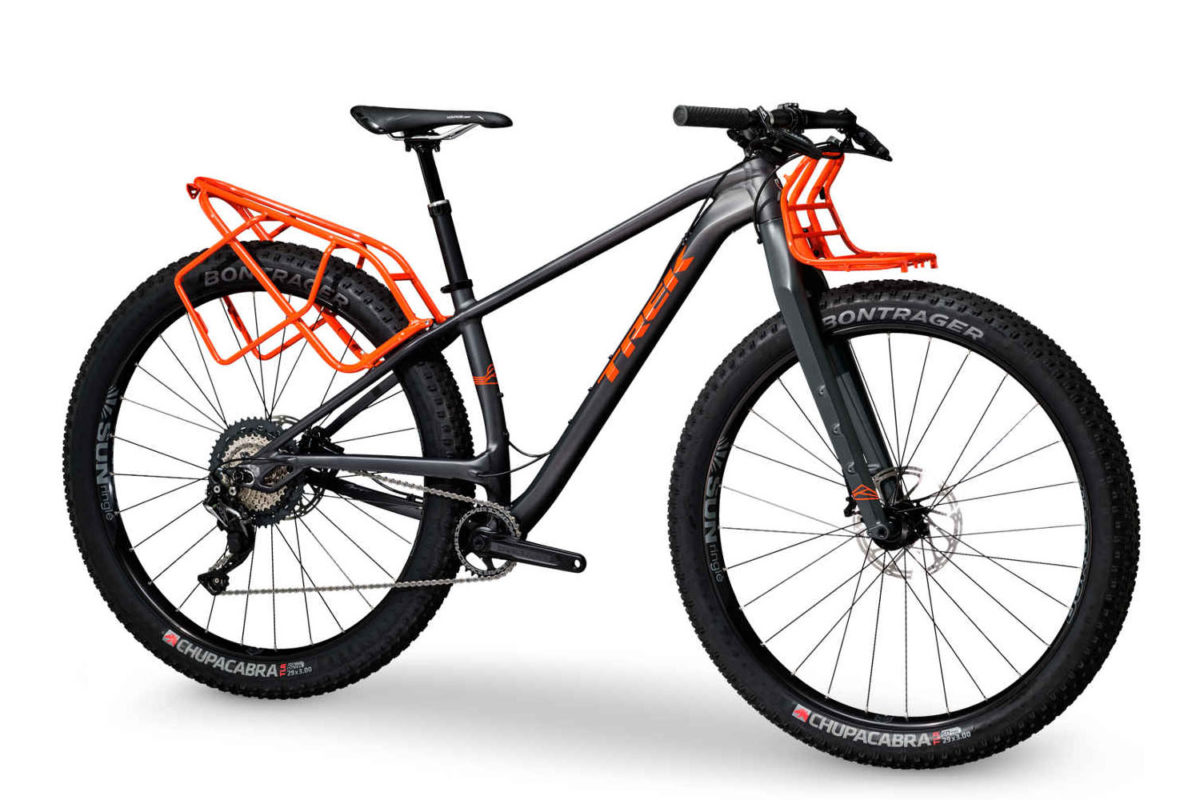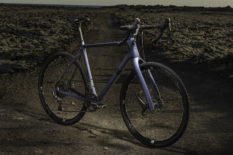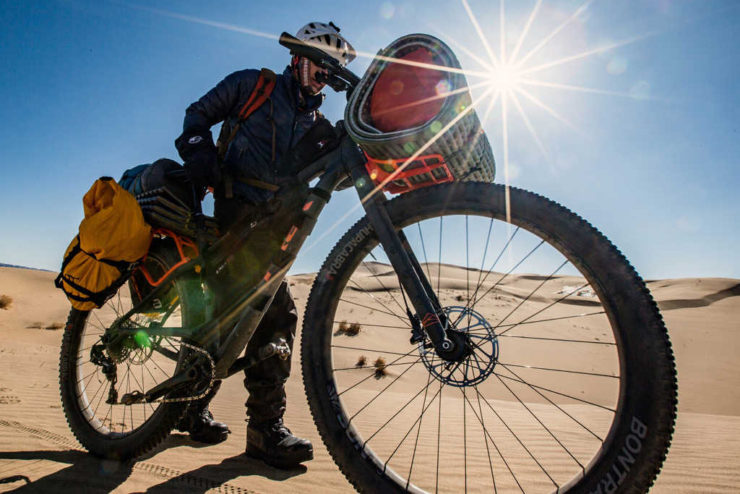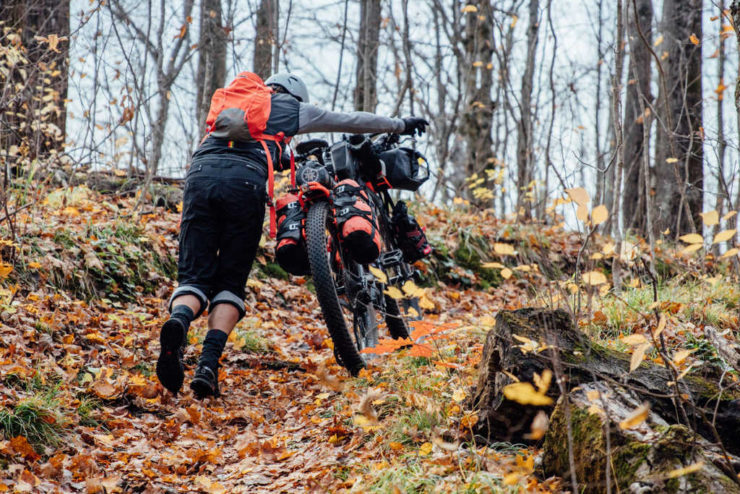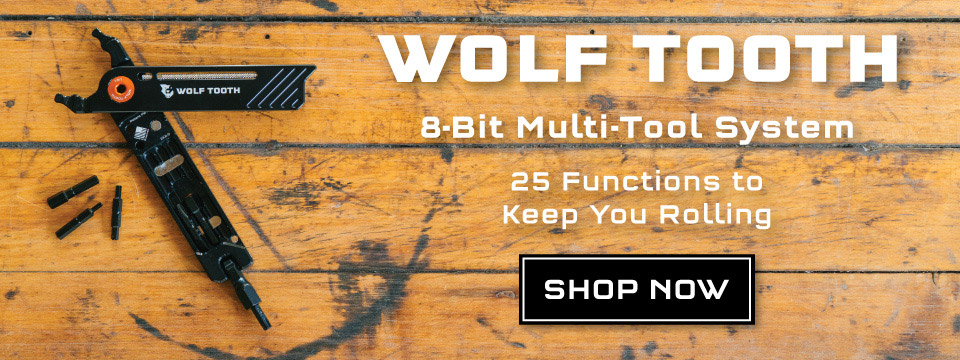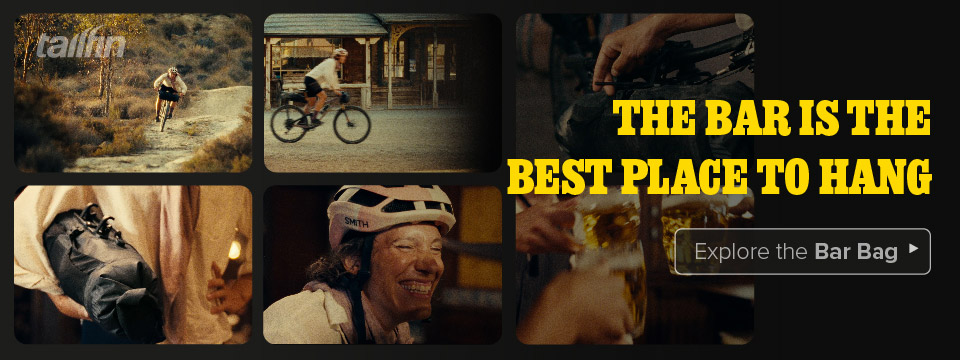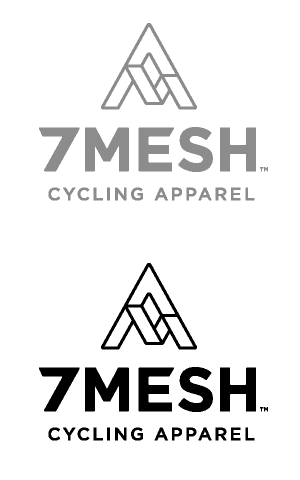Trek has quietly unveiled the latest bike in their touring and travel lineup… the 2018 Trek 1120, a 29+ dirt-tourer complete with a proprietary and thoughtfully designed rack and harness system, and a full mountain bike spec…
UPDATE: We have published the Trek 1120 full review. Trek has an extensive history making bikes specifically for adventure travel and touring. First the longstanding 520 and 720 touring bikes, and then the more recent gravel and dirt-road drop-bar tourer, the Trek 920. Now the Waterloo, Wisconsin based juggernaut has introduced a bikepacking-specific rig to this lineage, the 2018 Trek 1120, which many might dub ‘the bikepacking Stache’ due to several design characteristics and the 29+ tire format shared with their popular Stache hardtail mountain bike.
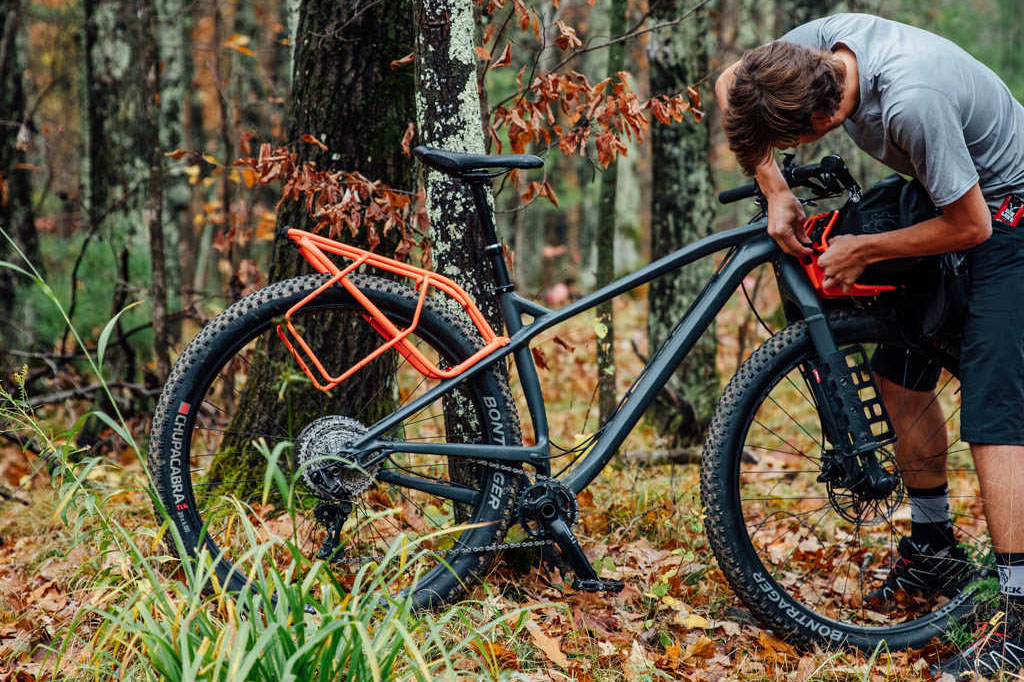
While the Stache is a great bikepacking rig in it’s own right, the new 2018 Trek 1120 brings a few tricks of its own to the table. The most obvious is the proprietary aluminum rack system. The front rack is designed to cradle a dry bag and/or other assorted cylindrical objects and set the center of gravity slightly lower than a traditional handlebar roll. This unique rack also prevents bag and cable interference and eliminates the need for handlebar straps freeing up valuable real estate on the bars.
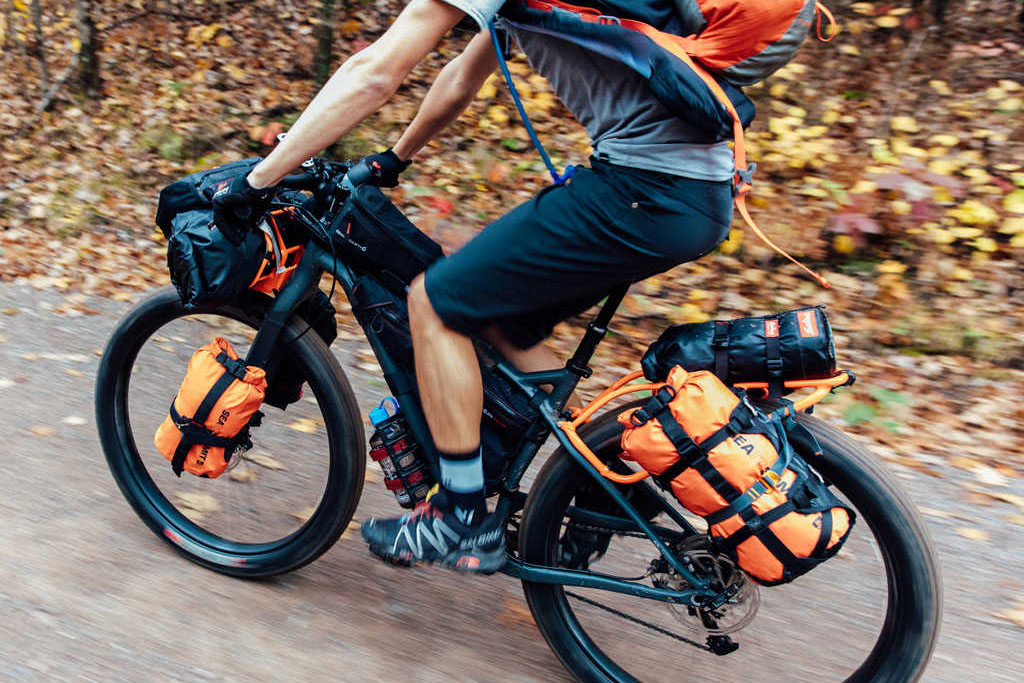
The rear rack is even more distinctive. It’s designed to secure a proprietary dry bag harness system on either side (fitting up to 10L dry bags) providing a setup similar to two small rear panniers — albeit much more secure — to allow a bit more packing space than that of a traditional seat pack. This concept was developed to move weight that would normally be carried in a large cantilevered seat pack down low, also clearing the space between the seat and top of rack for use with a dropper seat post… or for smaller riders who simply can’t fit a large bag between the saddle and the top of a 29+ wheel/tire. In addition, the rear rack provides an angled upper platform useful for lashing down cylindrical items, such as a tent or sleeping pad, without interfering with the 1120’s 125mm Bontranger dropper seat post.
KEY FEATURES
- 29+ Tires for added traction and floatation.
- All-new proprietary rear rack system for two 10L dry bags and top storage.
- Front rack cradle for secure front dry bag loading.
- Carbon adventure fork with two sets of triple mounts.
- Wide range 1x drivetrain with disc brakes and dropper post.
- Internal derailleur and dropper post cable routing.
TECH SPECS
- PF92 Bottom Bracket.
- 31.6mm seat post.
- Tapered Headtube, 1 1/8” to 1.5”.
- 440mm chainstays.
- 148mm thru-axle rear end and 110x15mm front.
- 70.3° head angle, 73.5° Seat Tube Angle, 7.5cm BB Drop.
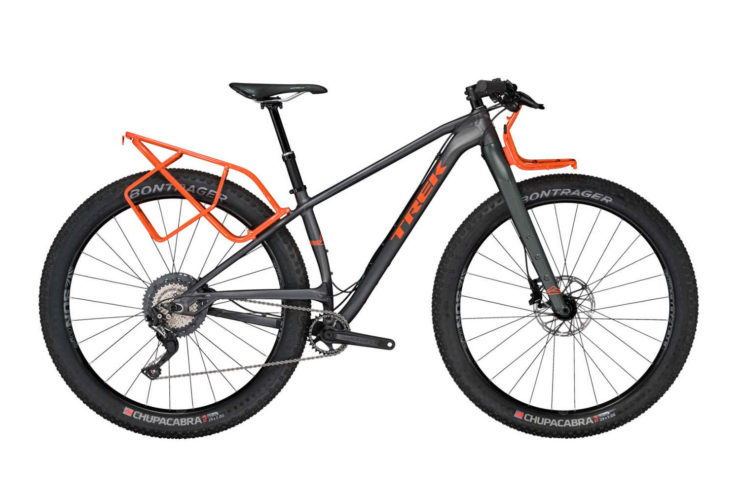
Trek 1120 vs the Stache
While the look and overall design of the new 2018 Trek 1120 shares many of the same characteristics as the Trek Stache, its geometry is quite different. The most obvious similarity is the signature mid-stay chainstay layout — designed to place the driveside stay over the chain to allow a shorter chainstay length. However, even though the 1120 shares this feature, it has a slightly longer chain stay than the Stache (440mm vs 420mm on the Stache). The Trek 1120 also gets a slightly shorter top tube, a 3mm lower BB, and a steeper 70.3° head angle (versus the 68.4° HTA on the Stache). All this is likely Trek’s recipe to mold the 1120 into a more stable ‘dirt-road touring’ platform than their ultra-nimble, trail-shredding Stache.
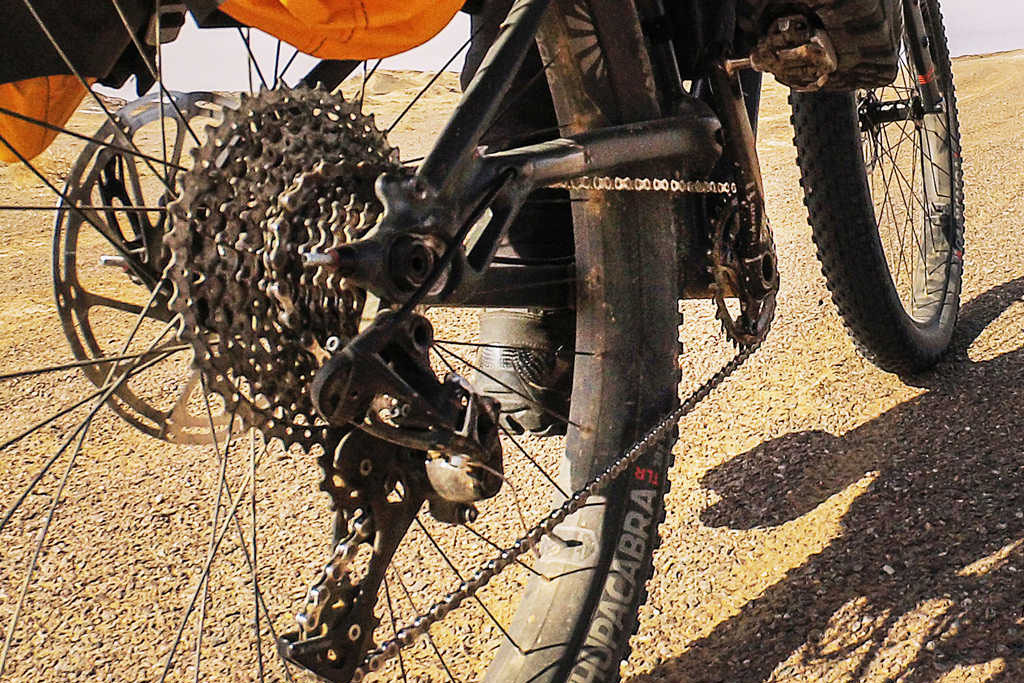
The 2018 Trek 1120 Frame and Fork
The new Trek 1120 bikepacking-ready frame is welded from Trek’s own Alpha Platinum Aluminum. The rear-end features BOOST 148 spacing and a Stache-like Midstay design. Other frame highlights include a tapered head tube, internal derailleur and dropper post routing, a PF92 bottom bracket, and Trek’s own Stranglehold dropouts.
The suspension corrected fork is called the Trek 1120 Adventure HCM Carbon Fork and has 110mm BOOST spacing as well as triple mount rack and accessory bosses on either side.
The Trek 1120’s build, as expected, has a selection of Bontranger components. However, Trek made some nice choices in the bike’s bombproof drivetrain featuring mostly Shimano SLX components with a wide-range 11-46 11spd cassette matched with a RaceFace 30t chainring. This provides a granny gear with about 19.9 gear inches for loaded travel even with the voluminous 29×3″ Chupacabra tires. Here is the full build list.
Wheels
- Front Hub Bontrager sealed bearing, alloy axle, Boost110
- Rear Hub Bontrager alloy, Boost148
- Rims SUNringle Duroc 50 SL 28-hole
- Tires Bontrager Chupacabra, Tubeless Ready, Inner Strength sidewalls, aramid bead, 29×3.00″
Drivetrain
- Shifters Shimano SLX M7000, 11 speed
- Rear derailleur Shimano SLX M7000, Shadow Plus
- Crank Race Face Aeffect, 30T Direct Mount Narrow Wide
- Bottom bracket PF92
- Cassette Shimano SLX M7000, 11-46, 11 speed
- Chain Shimano HG-601
Components
- Saddle Bontrager Montrose Comp
- Seatpost Bontrager Drop Line 125, internal routing, 31.6mm (15.5: Drop Line 100)
- Handlebar Bontrager Crivitz, 31.8mm
- Grips Bontrager Race Lite, lock-on
- Stem Bontrager Elite, 31.8mm, 7 degree, w/computer & light mounts
- Headset Integrated, cartridge bearing, sealed, 1-1/8” top, 1.5” bottom
- Brakes SRAM Level T hydraulic disc
The 19.5″ 2018 Trek 1120 weighs 14.07 kg (31.01 lbs) and is available for order from dealers for US $2499. Stay tuned as we are slated to get our hands on the new 2018 Trek 1120 and report back with a more detailed review.
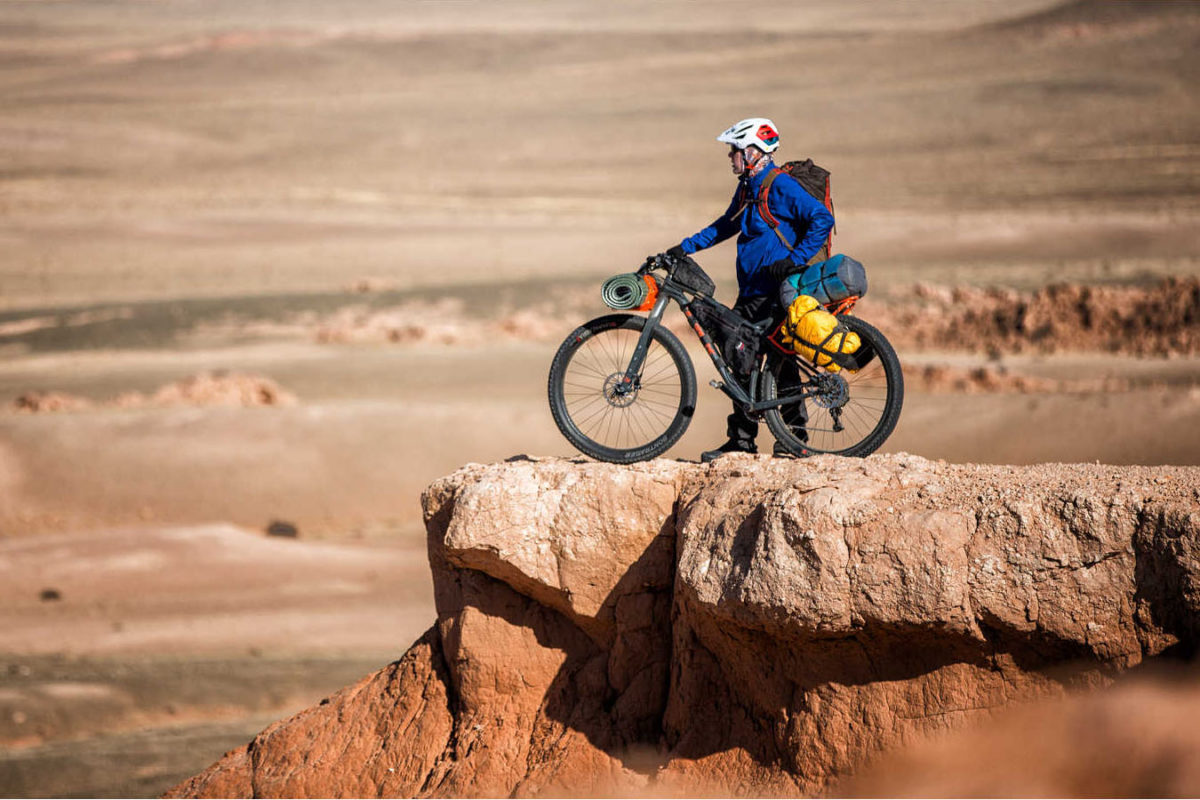
Please keep the conversation civil, constructive, and inclusive, or your comment will be removed.






